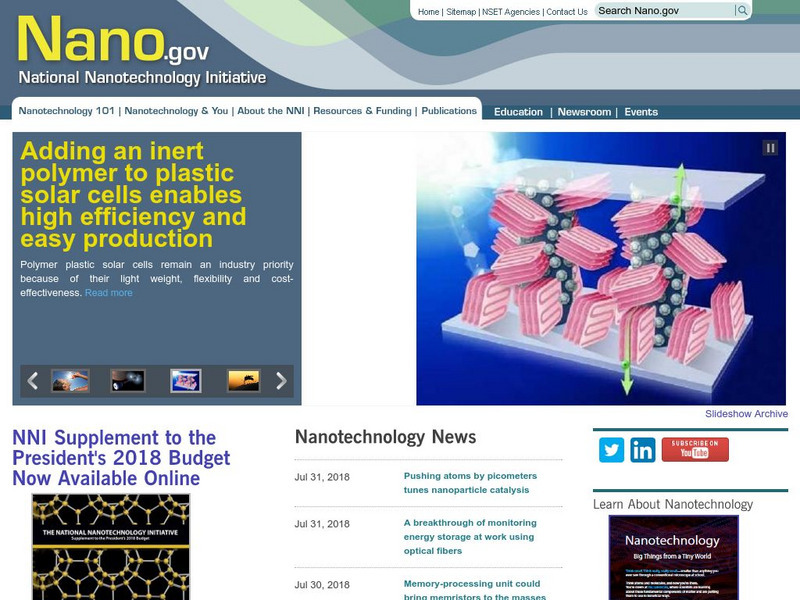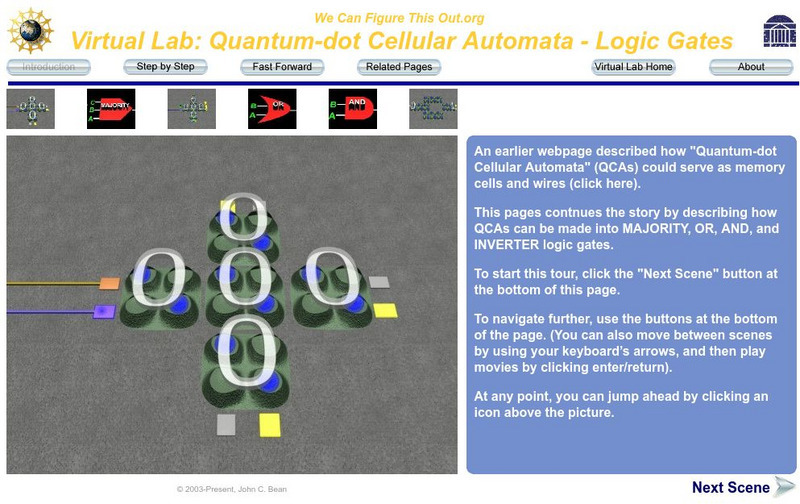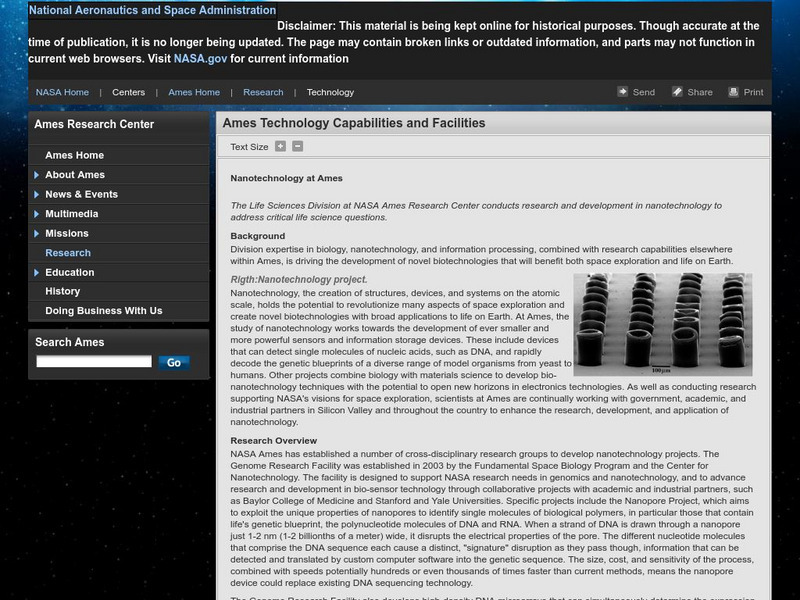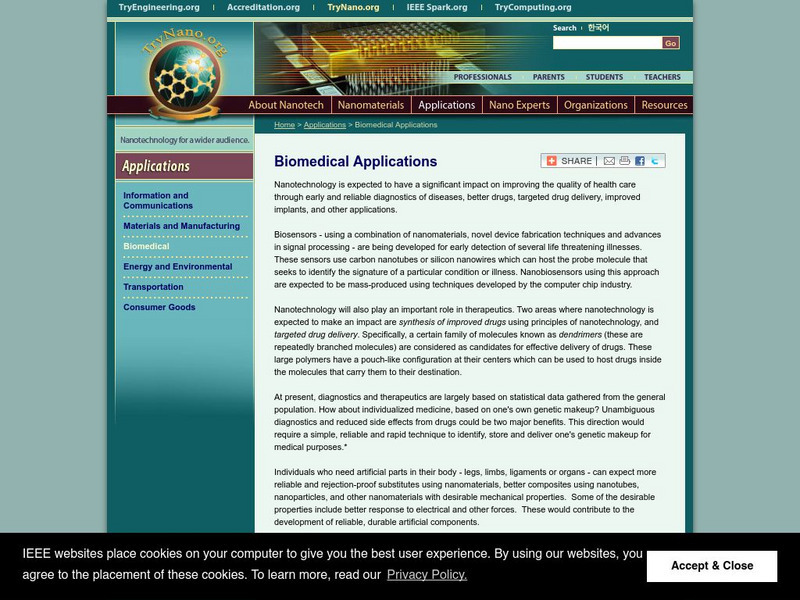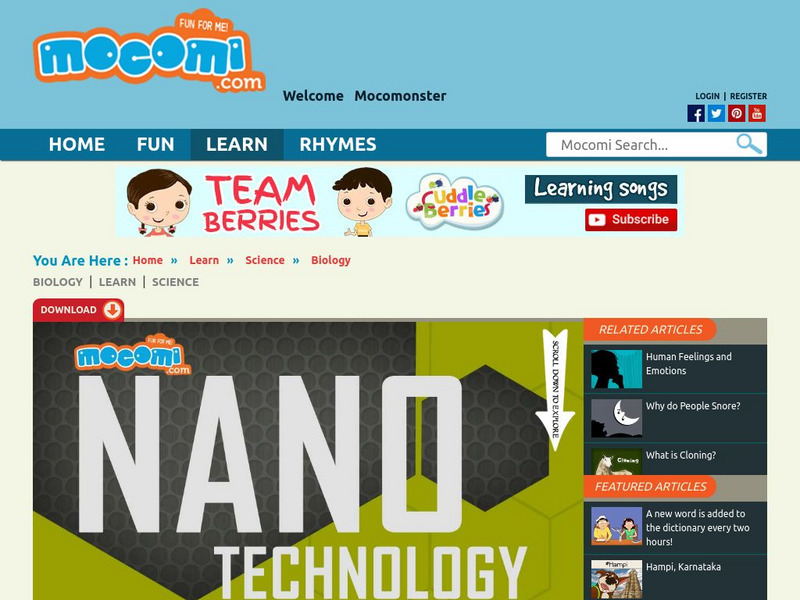Scientific American
Scientific American: Scoring With Buckyballs
Buckyballs and nanotubes, two types of fullerenes, are being examined for potential in nanotechnology and nanoengineering.
Famous Scientists
Famous Scientists: K. Eric Drexler
Learn about the life and discoveries of K. Eric Drexler in this article. Learn how K. Eric Drexler is known for his discoveries in nanotechnology.
Other
National Nanotechnology Initiative: Nanotechnology: Big Things From a Tiny World
Twelve-page illustrated brochure describes what nanotechnology is in terms that nonscientists can understand. Discusses nanometers, nanoscale, and the kinds of nanotechnology-related innovations that are now available. Also discusses the...
Other
National Nanotechnology Initiative
The National Nanotechnology Initiative is a clearinghouse of information about what the U.S. government is doing to ensure continued U.S. leadership in the field of nanotechnology.
Science Museum, London
Science Museum: Antenna: Nanotechnology: Small Science, Big Deal
A description of how nanotechnology can manipulate tiny particles and have applications in sports, clothing, foods, electronics, pollution control, alternative fuels, crime fighting, wars, and healthcare.
Lawrence Berkeley National Laboratory
Berkeley Lab: Did You Ever Wonder? The Invisible Wonders of the Nanoworld
Students investigate the invisible marvels of the nanoworld. Some topics examined are nanometer, nanostructures, and a diode. The resource consists of pictures, quotes, and links to additional resources.
Alberta Online Encyclopedia
Alberta Online Encyclopedia: Alberta Inventors and Inventions: Robert Burrell
Learn about the first commercial application of nanotechnology developed by Robert Burrell.
University of Virginia
Uva Virtual Lab: Quantum Dot Cellular Automata (Qca) Logic Gates
"Quantum-dot Cellular Automata" (QCAs) can serve as memory cells and wires. This lab describes how QCAs can be made into MAJORITY, OR, AND, and INVERTER logic gates.
Stanford University
Stanford University: Invisible Rays
This activity focuses on investigating the electromagnetic spectrum using ultraviolet beads. Students learn how material properties change as the size of the material decreases to the nanoscale.
Cosmo Learning
Cosmo Learning: Richard Feynman Lecture on Nanotechnology: Tiny Machines
A video lecture from Dr. Richard Feynman exploring tiny machines. Webpage breaks down the lecture into twelve segments. Videos vary in length and explain the science behind nanotechnology. Understand computer chips, sound waves, and the...
NASA
Ames Research Center: Center for Nanotechnology
Check out these images of nanomaterials being created at NASA. Also learn about the research NASA is completing as well as how they plan to use this new technology in their labs.
University of California
University of California: Geometry in Action
This page collects various areas in which ideas from discrete and computational geometry (meaning mainly low-dimensional Euclidean geometry) meet some real-world applications.
Other
Nanozone: Nanoconverter
Use the nanoconverter to convert inches, feet, or miles (or millimeters, centimeters, or meters) into nanometers.
Other
Nanozone: How Small Is Small?
Learn about the relative size of nanometers, micrometers, centimeters, and meters by arranging objects, such as red blood cells, hair, and a penny, from smallest to largest.
Other
Nanozone Comics: They Came From His Lab!
Follow the adventures Of Kris Pister as he evolves from love of rockets to an interest electrical enginering. Interesting ideas are presented on how smaller and smaller robots can be used in everyday life.
Other
Nanozone Comics: Honey, I Shrunk Myself!
Follow Rachel as she evolves from an interest in solving games and patterns to a career in material science. Watch as she uses nanotechnology to work with polymers. Read about new nanotech devices that can help improve our world in the...
Other
Nanozone Comics: What Jorge Gardea Torresdey Say
Follow the adventures of Jorge as his life evolves from a love of chemistry as a young boy to a scientist working to find new ways that nanotechnology can help clean up the environment.
Other
Nanozone Comics: Dr. Lydia Sohn Saves the World
Follow the life of Dr. Lydia as she evolves from a love of science as a young girl to solving tough questions in biology using nanotechonology.
Other
Nanozone Comics: The Perils of Dr. Paul Alivisatos
Trace the life of Dr. Paul from his interest in chemistry as a young boy to a career working with some of the smallest solids we can make, called nanocrystals.
Other
Try Nano: Applications: Biomedical Applications of Nanotechnology
Describes the promising applications of nanotechnology, which are expected to revolutionize how illness is diagnosed and treated.
Mocomi & Anibrain Digital Technologies
Mocomi: What Is Nanotechnology?
Explore the study of all things very, very tiny. Where is nanotechnology used? How is it measured? Find out!





